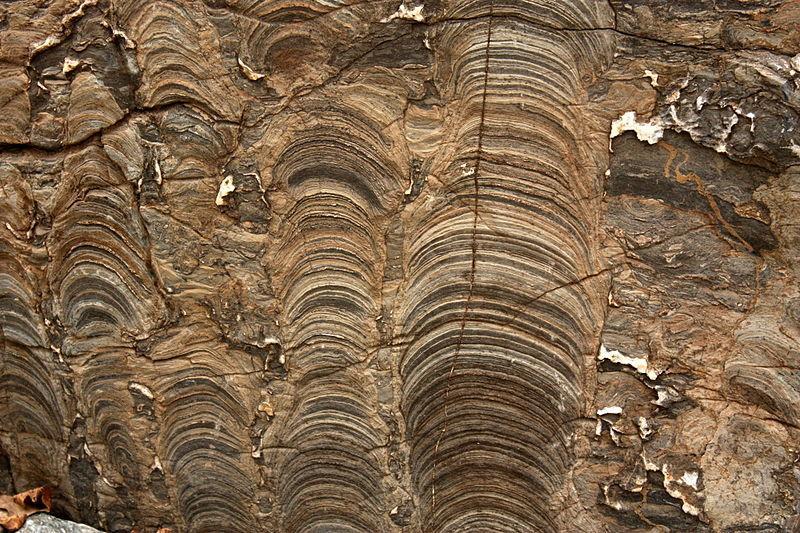What Is the Oldest Fossil Ever Found?


Fossils are the preserved remains of living organisms that have inhabited the planet thousands of years ago. This preservation occurs due to various processes which have allowed the remains of bodily structures to be observed today. Collectively, these processes are known as fossilization which causes organic material to be replaced with minerals over time. It is this replacement which allows them to be preserved, since the organic material would otherwise have disintegrated. When we combine the fossils, we create the fossil record. This is a reference which allows us insight into how animals, plants and other organisms lived thousands and millions of years ago.
With this in mind, it is helpful to understand prehistory by asking what is the oldest fossil ever found? thedailyECO reveals the oldest fossil in the world and helps us to understand why they are so important.
What are fossils and how are they formed?
As we said, fossils are remains or marks of organisms that have previously inhabited the Earth. This does not necessarily mean they are structures of their body. They can also include footprints, marks made by claws, nests with eggs or even their fossilized excrement. For this reason, fossils can be of animals, their markings, plants, bacteria or other organisms. Entire specimens are rare, with many fossils being only fragments of the organism.
The most frequent fossils are found in rocks, but we can also find fossils in ice, amber or in the sap of trees. Although they can belong to any type of organism, it is most common for fossils to be found in organisms with hard body parts. This is because those with hard body parts such as bones or scales are more likely to resist the conditions which favor decomposition. For example, we can find dinosaur skeletons which have no fossilized remnants of skin or other soft tissues.
We have explained that fossilization is not one process, but a set of processes which result in the preservation of living organisms. Below are some of the most significant processes which result in fossilized remains:
- Mineralization: in this process, minerals are added or modified to body structures. It is quite common among hard parts such as tree trunks, large bones or shells.
- Permineralization: when water floods the organic remains, it an help to preserve soft tissues which are then replaced by minerals. These types of fossils are those which often provide the most information about the organism.
- Carbonization: this process occurs when there is a loss of volatile substances such as oxygen, hydrogen or nitrogen. When this occurs it leaves a carbon film. It is common in plant or animal remains with lignin, chitin, cellulose or keratin. It usually occurs in organisms that are crushed by rocks since the compression of the rock compacts the organism and makes it easier to preserve.
- Castings and molds: they are negative or positive impressions of the parts of the organism or its ichnofossils (also known as trace fossils).
Discover more about the types of fossil preservation with our related article.
What are the oldest fossils ever found?
Stromatolites are considered the oldest fossils on the planet and date back to about 3.5 billion years ago. To put this into context, the Earth is about 4.5 billion years old and it is thought that cellular life began around 3.8 billion years ago. These organisms were neither dinosaurs, trilobites nor ammonites. The oldest fossils found in the world are bacteria.
Specifically, it is thought that stromatolites would be formed by microbial masses composed of two different types. The first is anoxygenic prototrophic filamentous bacteria which are photosynthetic bacteria that do not produce oxygen. The second is cyanobacteria associated with calcium carbonate sediments. Learn more about what are cyanobacteria with our related guide.
Some stromatolites have been found throughout the planet, mainly in Australia and South Africa. The oldest known was the one found in the Pilbara of Australia in the 1980s and which was dated at 3,496 million years. It is still possible older fossils are yet to be discovered, but it is difficult to find anything much older if cellular life began 3.8 billion years ago.

Recent discovery of the world's oldest fossil
The oldest fossil ever found was only discovered relatively recently. These fossils are the microbial stromatolite fossils from 3.77 billion years ago, less than 1 billion years after the Sun and Earth are believed to have formed.
The study was recently published in the journal Nature and is led by a team from the University of College London (UCL)[1]. The remains were found on a beach in Nuvvuagittuq (Quebec, Canada), the same place where some of the oldest sedimentary rocks on the planet have been found. They date back to between 3.7 and 4.2 billion years ago.
The marks of these fossils have been found between layers of quartz, in a site where there was a hydrothermal spring that gave off hot water rich in minerals. This team identified filaments preserved in the sediments which belonged to a species of primitive bacteria. During their identification, they ruled out any non-biological origin of these fossils, demonstrating that they would not have been formed by changes in temperature or pressure on the rock. These fossils had a type of branching characteristic of iron-oxidizing bacteria, like those found in other hydrothermal vents.
These fossils suggest that the Earth had conditions suitable for life earlier than previously thought. It is now believed that life arose in hydrothermal vents on the seabed and later developed outside the aquatic environment.
Another interesting fact is that conditions similar to those on Earth at that time have been found on other planets and moons. These include the ancient oceans of Mars, underground oceans of Europa (Jupiter's moon) and on a satellite of Saturn known as Enceladus.
while the oldest fossils ever found are of bacteria, many of us are fascinated by the fossils of larger organisms. Learn more about our understanding of these organisms with our articles on how many kinds of dinosaurs were there and were there ocean dinosaurs?
If you want to read similar articles to What Is the Oldest Fossil Ever Found?, we recommend you visit our Facts about nature category.
1. Dodd, M. S., Papineau, D., Grenne, T., Slack, J. F., Rittner, M., Pirajno, F., O'Neil, J., & Little, C. T. (2017). Evidence for early life in Earth's oldest hydrothermal vent precipitates. Nature, 543(7643), 60–64. https://doi.org/10.1038/nature21377






